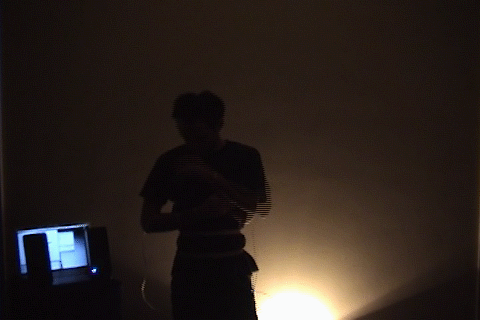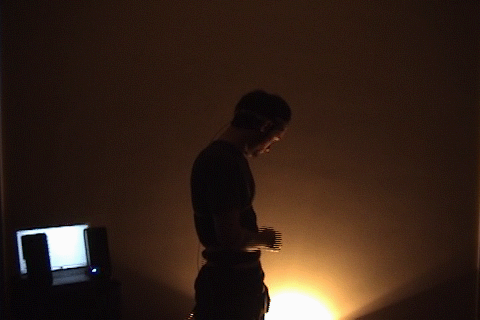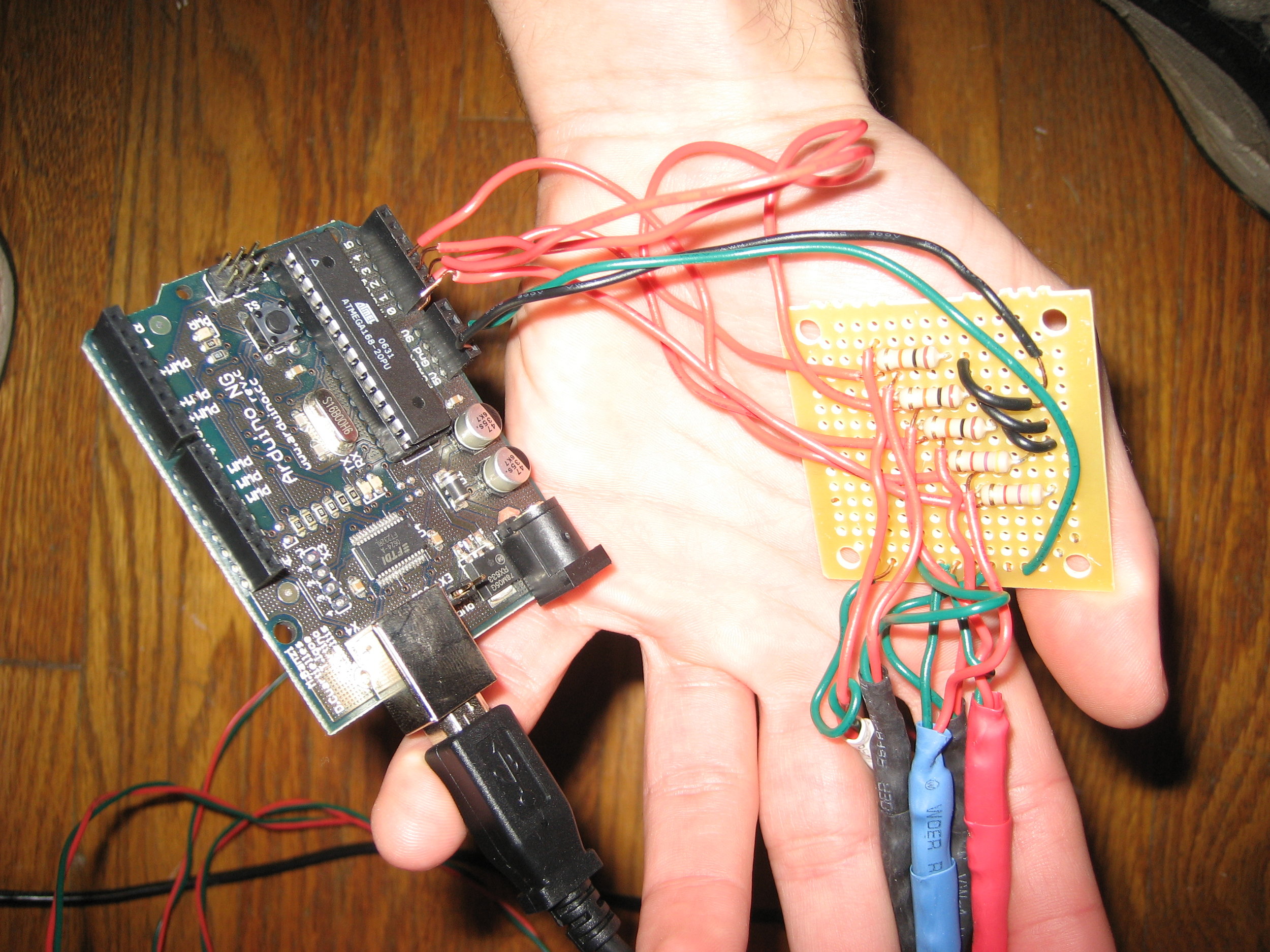lunasuit
The lunasuit is another exploration of transmutation of light energy-- in this permutation, as interfaced with the surface of the human body. Both conceptual and functional, photocells are fixed at key points on the body, roughly associated with chakras. Each light-sensor source streams data to a custom software application which allows for the mapping of the light-data to sound, or any other medium.
A nice article was written about the system in the C'Ville Weekly:
Flashlight tag it ain’t. Lacy’s “Lunasuit” consists of five light sensors that, with the help of a computer, control sounds depending on the changes in the performer’s interaction with the light.
“I like tying technology to the body to understand the energy that affects us,” Lacy says. “It’s using technology for your body’s sake, for remapping your body and understanding it in a new way through the use of something really simple.”
The suit’s light sensors correspond loosely to some of Hinduism’s chakras, physical points of spiritual energy. The forehead sensor represents intellect and triggers tiny sound samples of cicadas. “I picture them as brain synapses working really fast,” Lacy says. The heart, a point of compassion and humanity, is translated into soothing wind chimes and pulsing drums. The root sensor, at the gut, is matched with low human voices. Sensors on each hand affect the pitch, speed and rhythms of those sounds.
“We have these natural receptors,” says Lacy, referring to eyes and ears, “but we can balance them and understand that they are connected.” Thus the Lunasuit lets the body translate visual light into a sonic experience. “The fun part of it is sensing things outside of our biological dispositions,” he says.
A recent UVA graduate, Lacy isn’t fooling when it comes to exploring connections between light and the body. He has “light” tattooed on his left shoulder and says the body is important as well. “It’s not about transcending your body,” he says. “It’s about using your body and reevaluating the experiences we have through it.”
Lacy presented the Lunasuit at the school’s annual Digitalis computer music festival at the end of April, a few days before The Bridge performance. In the fall, he’ll head off to Mills College in Oakland, California, to pursue a Master’s degree in electronic music. In the future he hopes to build more Lunasuits and give them away. Maybe you’ll have one in your own wardrobe some day.
Above are some early prototypes, and screenshots from software development, as well as a working design for a wireless sensor band, to be worn by a dancer. I The device was used in a number of performances including the Noh Space in San Francisco as well as the Bridge PAI.
Technology:
arduino + electronics
photocells
Max/MSP
LilyPad
Bluetooth
Ableton Live
role(s):
engineer
designer
artist
performer
developer
























